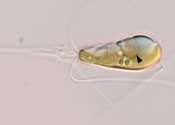Cell biologists identify new organelle present in mammalian cells made of rings of DNA
Researchers at ETH Zurich recently identified a previously unknown compartment in mammalian cells. They have named it the exclusome. It is made up of DNA rings known as plasmids. The researchers have published details of ...








